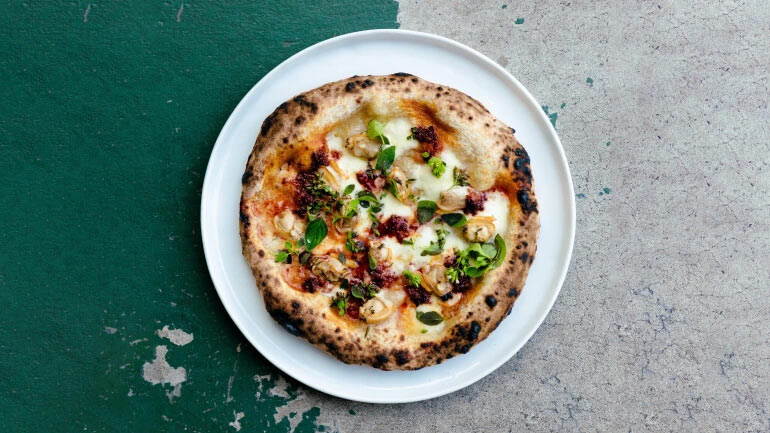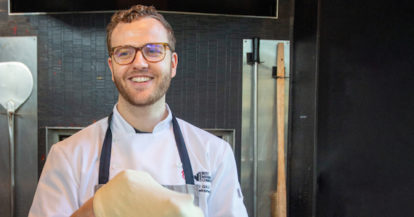The act of food foraging presents an exciting opportunity for culinary professionals around the world. However, if you’re unfamiliar with the practice, you might be wondering what does foraging mean exactly and why is it becoming a restaurant trend?
To dive deeper into this topic, we interviewed Chef Josh Gale, who shares his experiences and knowledge of food foraging. For Josh, wild foraging is more than just a hobby – it’s a way to elevate the soul connection that food can have. He often spends time on the weekends with friends searching the woods in Vancouver and Squamish, British Columbia, picking out seasonal mushrooms and greens to add a local and sustainable element to his cooking.
But Josh is not the only one embracing the world of wild foraging. In this article, we’ll discuss how wild foraging for ingredients is becoming a trend with consumers and restaurants alike by covering:
- Chef Josh Gale’s background as an executive chef and hardcore foodie
- Answer the question ‘What is foraging?’
- Explain how Josh started food foraging as a hobby
- Uncover how foraging is becoming more popular among consumers
- Cover two creative ways restaurants can use foraging
Introducing Chef Josh Gale: Executive Chef and Hardcore Foodie
Born and raised in Vancouver, Josh loves to share his food experiences, while also helping other people connect to restaurants. He started his career in his early twenties working at hip, contemporary indie restaurants. As Josh got a bit older, he reconnected with more nostalgic foods – the types of comfort food that he remembered eating as a kid (Hint: classic mac n’ cheese).
Since joining the Tap & Barrel Group as an Executive Chef of Culinary Development, Josh now has the opportunity to deliver comfort food-style dishes to a much larger audience. Rather than serving a hundred people a night at indie restaurants, he now engineers menus and creates new dishes that serve over a million people a year between all of the Tap & Barrel chain comfort food restaurants.
The test kitchen gives Josh the ability to test new products – like cheeses, greens, and oils – and to put food on the menu that he’s proud to share with customers. “We constantly offer new and unique things to give people more reasons to come into the restaurants and try things out. It’s very much like a kind of Willy Wonka chocolate factory situation,” Josh remarks.
However, Josh’s passion for cooking and sharing his food story with others goes beyond the test kitchen. His latest passion? Wild foraging.
What Does Foraging Mean?
If you’re wondering what does foraging mean, it’s the act of looking for, identifying, and picking wild foods for free. This can include a wide variety of plants, from mushrooms and berries, to herbs, nuts, and seeds.
To further answer the question ‘what is foraging’, consider thinking about how humans used to live as hunters and gatherers, a lifestyle that focused on hunting animals or fish, and finding wild vegetation for survival. As commercialization and the convenience of grocery stores were introduced, however, our lifestyles and interests have changed significantly. As a result, many consumers have become detached from knowing where their food comes from, as well as understanding the dangers of wild foods, like how to identify toxic or dangerous plants. If practiced carefully, however, food foraging can be an excellent opportunity for home cooks and restaurateurs to add new, fresh, and local ingredients to their dishes.
How Josh Started Foraging as a Hobby
For Josh, his interest in foraging started during his days working at indie restaurants. He relied on a couple of forager-style of suppliers in Vancouver to get new ingredients for his cooking. From there, he learned more about the basics of foraging so he could try his hand at the process in a safe and responsible manner.
Now, foraging has become a weekend activity for Josh and his friends, which often involves spending the whole day in the woods, picking all different types of mushrooms and greens. “Everything changes here really kind of quickly. We just go from one season to the next. In the summer we have Morels, and then in the fall, you start to get Chanterelle mushrooms, and Pine mushrooms,” he explains.
“We clean the mushrooms together and sit down and cook insane meals, with up to seven different dishes with all these different mushrooms,” says Josh. “It’s become a staple with our little friend group. It helps us bond and keeps us going.”
Is Foraging Trending With Consumers?
In addition to being a hobby, Josh sees foraging as a growing trend that’s gaining popularity with consumers.
“You see things today that are becoming mainstream at the grocery store that, 10 years ago, you would only find at the farmers market,” Josh says.
“For example, if you go into Whole Foods, you’ll see they stock their own tomatoes at least six months of the year. I’m almost positive you would have never seen that six years ago, but would have only found roma and red tomatoes. Now, looking at the greens aisle, they have micro greens, edible flowers, and heirloom tomatoes. They have heritage varieties, like upland cress, purple cauliflower, and sprouting baby broccoli.”
As Josh notes, consumers are starting to see all of these new ingredients creep into the commercial supply chain. The demand for eating local, he notes, is clearly here and growing for these varieties.
How Can Restaurants Use Foraging?
While a wider variety of natural ingredients are slowly making their way into grocery stores, what does foraging mean for restaurants?
While foraging is easy to apply to the indie scene, Josh points out that it’s often not sustainable for largescale casual dining and comfort food restaurants – like the Cactus Clubs, Tap & Barrels, and Earls – to feed thousands of people in a day.
For smaller, independent restaurants that want to introduce foraged foods, however, it can be an excellent way to experiment with new dishes, or even try new food plating and presentation techniques.
“The fact that it’s showing up in indie restaurants and farmers markets right now, and the fact that the general population is searching for these things speaks to where food is moving – towards this movement of eating local and sustainability,” Josh says. “It’s the idea of eating things that come from our own backyard instead of buying things that are shipped.”
Tips for Restaurants to Start Incorporating Wild Foraging
Whether you’re ready to go foraging yourself or not, there are many other ways to incorporate fresh, local, and varied ingredients into your restaurant. For example, you can introduce new wild forageding type ingredients to spice up otherwise predictable menus. Here are some of Josh’s suggestions for getting started:
Start with Farmer’s Markets or Organizations
One of the easiest ways to tap into the foraging scene is to start introducing wild foraged ingredients sourced from farmer’s markets, or other bigger companies. For example, Mikuni Wild Harvest gathers seasonal ingredients from all over the world to offer fresh ingredients and a variety of items. Ingredients include a wide variety of mushrooms, truffle oils, berries, fruits, seafood, and so much more. Wild West Coast Foods is another supplier that harvests foraged ingredients from the Northwest Territories to southern British Columbia.
“These smaller startup organizations have the ability to connect slightly larger restaurants to really local, and hyper-seasonal ingredients,” Josh explains. “Ingredients are always changing, and to start, I suggest getting in touch with these companies.”

Create a Feature Menu Item
Another way to bring foraged ingredients into your restaurant is by creating a feature menu item. Since these types of ingredients come and go, the last thing you want is to leave an item on the menu for six, 10, or 12 months. Rather, try introducing a few items, like unique mushrooms, greens, or berries, to offer for a limited time. You can use these ingredients as part of your entrees, restaurant lunch specials, or, for example, in wild ingredient-infused teas, dressings, soups, or desserts. Just remember to get the word out about these new dishes and create a sense of excitement by leveraging different restaurant marketing strategies.
“The best way to celebrate foraging is just to start. Create some features and just gauge your audience. If your audience finds it interesting and unique, go from there,” Josh advises restaurateurs.
Serving wild food and foraged ingredients can help your restaurant return to nature and celebrate local culinary flavors. And fortunately, you don’t have to become an expert at picking wild Chanterelle mushrooms to get started. As Josh points out, there are lots of different ways to get started, like sourcing sustainable ingredients from a farmer’s market or organizational supplier, or introducing a new feature to your menu to test the waters with your customers.
Free job application template for restaurants
Sign up for our free weekly TouchBistro Newsletter







